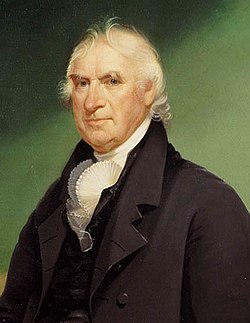This article includes a list of general references, but it lacks sufficient corresponding inline citations .(February 2013) |
| 12th United States Congress | |
|---|---|
11th ← → 13th | |
 United States Capitol (1800) | |
March 4, 1811 – March 4, 1813 | |
| Members | 36 senators 143 representatives 5 non-voting delegates |
| Senate majority | Democratic-Republican |
| Senate President | George Clinton (DR) [a] (until April 20, 1812) Vacant (from April 20, 1812) |
| House majority | Democratic-Republican |
| House Speaker | Henry Clay (DR) |
| Sessions | |
| 1st: November 4, 1811 – July 6, 1812 2nd: November 2, 1812 – March 3, 1813 | |
The 12th United States Congress was a meeting of the legislative branch of the United States federal government, consisting of the United States Senate and the United States House of Representatives. It met in Washington, D.C. from March 4, 1811, to March 4, 1813, during the third and fourth years of James Madison's presidency. The apportionment of seats in the House of Representatives was based on the 1800 United States census. Both chambers had a Democratic-Republican majority.
Contents
- Major events
- Major legislation
- States admitted and territories organized
- Party summary
- Senate
- House of Representatives
- Leadership
- Senate 2
- House of Representatives 2
- Members
- Senate 3
- House of Representatives 3
- Changes in membership
- Senate 4
- House of Representatives 4
- Committees
- Senate 5
- House of Representatives 5
- Joint committees
- Employees
- Legislative branch agency directors
- Senate 6
- House of Representatives 6
- See also
- Notes
- References
- External links



